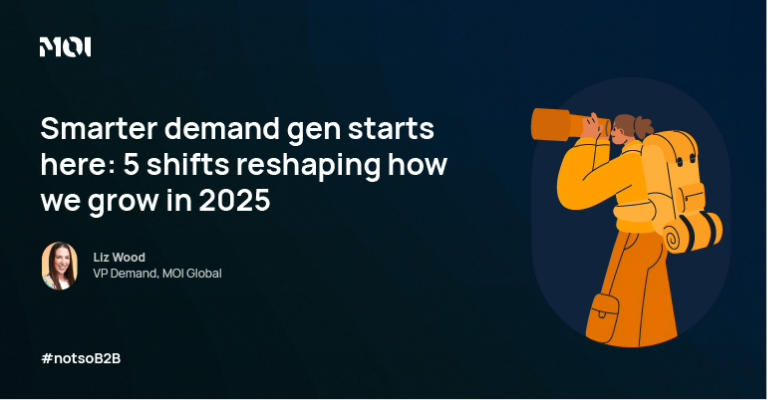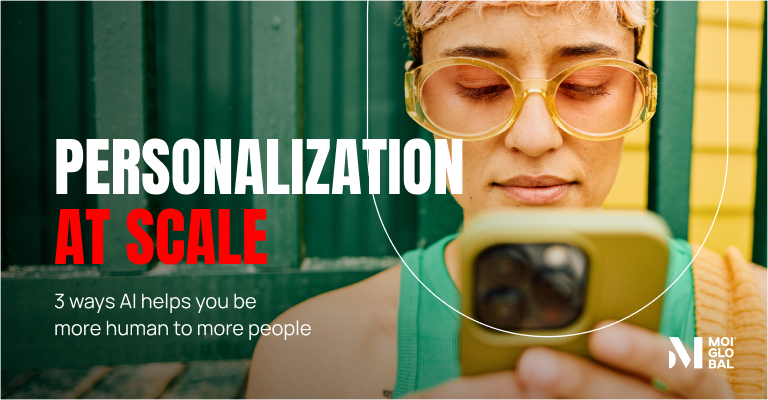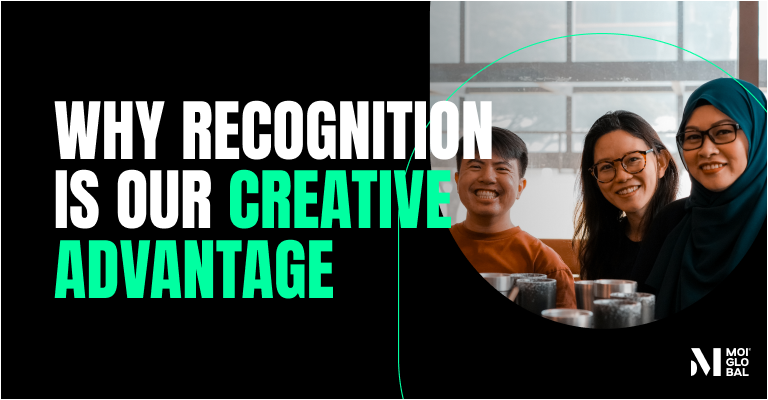
B2B demand generation has never been more complex—or more full of potential. Between shifting buyer behaviour, noisy channels, and unrelenting pressure to prove ROI, the old playbooks are running out of road.
The truth? What worked even two or three years ago is no longer enough. We need to think differently, measure differently, and—most importantly—design our programs around how buyers actually buy.
Here are five shifts I’m building into every enterprise demand gen program right now—and why they matter.
1. Campaigns felt secure. Now they feel risky.
Legacy marketers love the campaign model. It’s neat: plan in quarters, launch on a date, wrap with a report. But buyers don’t operate on our timelines. They don’t stop researching when our budget ends.
We need to treat demand gen like an ecosystem—a machine that never sleeps—not a set of disconnected bursts. That means sustaining visibility across platforms, refreshing creative continuously, and aligning brand, performance, and ABM into one cohesive motion.
Action: Even if you can’t run fully always-on programs, pick one core channel (LinkedIn, search, or syndication) and commit to never going dark there. Build from that baseline.
2. Measurement isn’t about perfection—it’s about directional clarity.
I’ve yet to meet a brand—no matter how sophisticated—that can perfectly measure the impact of every touchpoint. Even with advanced BI teams, most admit they’re missing 30–40% of the picture.
We need to stop chasing perfect attribution and focus instead on directional clarity: knowing what can’t be measured and designing with that in mind. Not every moment will have a pixel or lead score attached to it, but silent influence, multi-touch engagement, and long-term brand impact still move the needle—sometimes more than the last click.
Action: Pair short-term metrics that give quick read-outs with long-term indicators you review quarterly or annually. Don’t ignore what’s harder to measure just because it doesn’t fit neatly in a dashboard.
3. ABM must be smart, not just small.
Too many ABM programs are either stuck in a one-to-one vanity mode or built on static target account lists (TALs) that never evolve. Both waste budget and opportunity.
In 2025, ABM is about dynamic prioritisation, guided by intent data and market signals. Your budget should follow where the interest is—not where it was six months ago.
Action: If you can’t refresh TALs weekly, do it monthly or quarterly. Use intent signals to re-rank your list and double down on accounts showing real-time engagement.
4. Messaging needs to match how people buy—not how we sell.
Too often, our copy, content, and campaigns mirror our internal funnel stages, not the buyer’s reality. We push product features when buyers are still defining their problem. We measure leads when they’re still years from a purchase.
Buyer-centricity isn’t just about tone of voice—it’s structural. It should influence the TAL you build, the keywords you bid on, and the way you handle sales hand-offs.
Action: Review your messaging through the lens of your buyer’s real pain points. If it reads like your sales deck, rewrite it.
5. Sometimes influence matters more than a form fill.
This is the hardest shift for many stakeholders. Not all marketing has to lead directly to a conversion. Some of the most powerful influence happens before buyers are “in market”—and before they even know they need you.
I’ve run programs with no CTAs at all—just purposeful, sustained presence. The result? Accounts we’d been silently influencing for months moved into our pipeline naturally.
Action: Create at least one program each year with influence as the primary goal. Measure lift in awareness and engagement, not clicks or downloads.
Final thought: Audit the gaps—not just the work
I’m not suggesting you tear everything down. But I am asking: when was the last time you audited what you’re not doing?
It’s often the defaults we’ve stopped questioning—not the shiny new projects—that hold us back.
Ask yourself:
- Are we defaulting to what’s comfortable instead of what could move the needle?
- Are our programs designed around how buyers buy, or how we sell?
- If we stopped one “foundational” program tomorrow, would pipeline drop?
Small, intentional shifts can create compound impact. The question is—are you ready to make them?


